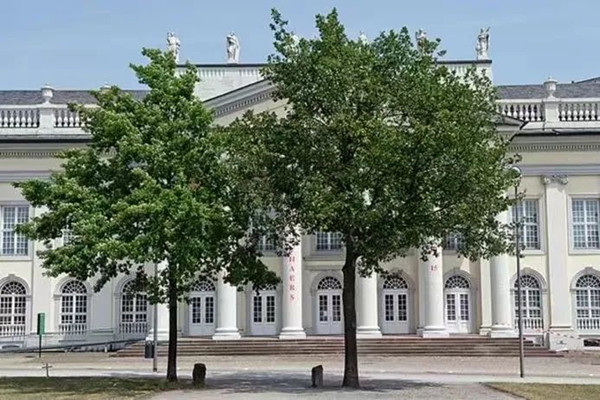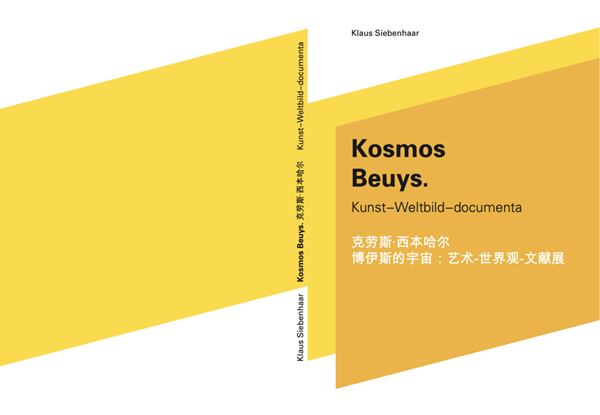
The Beuys Universe: Art - Worldview - documenta. Series VI
Joseph Beuys and the documenta
documenta 7
19 June-28 September, 1982
Author: Prof. Dr. Klaus Siebenhaar
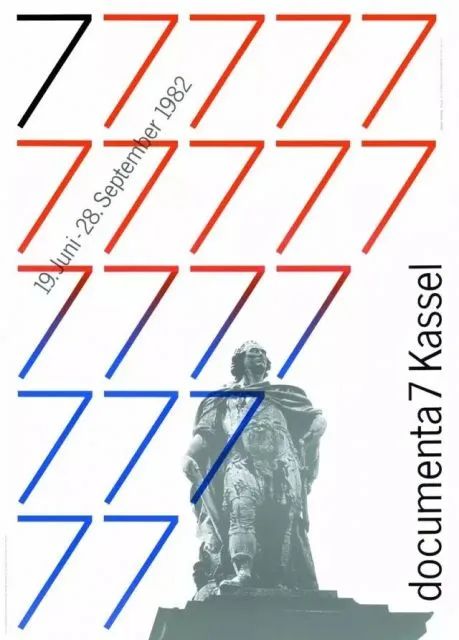
documenta 7
Under the direction of Rudi Fuchs, documenta 7 marked the comeback of painting and museum as an institution, and deliberately set a counterpoint to the dominant media, conceptual and performance art as well as the playful, non-hierarchical positions of postmodernism. Fuchs wanted his documenta to be understood as a "poetic narrative" in which the work of art finds its place in its dignity and uniqueness: No event or show, but contemplation and reflection characterised the atmosphere. The contemporary "masters" of painting and sculpture in museum interior were again to be the focus of public interest.
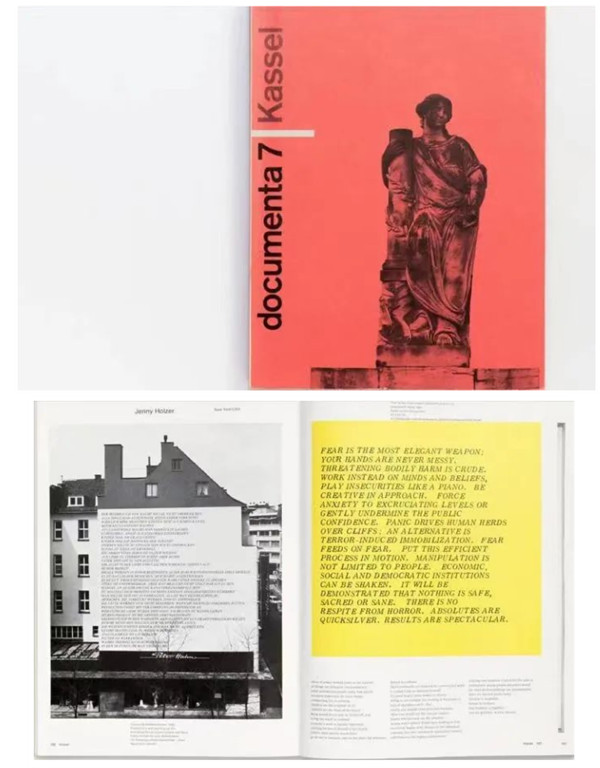
documenta 7 catalog, Kassel, 1982
photos: Marianne Viers
Joseph Beuys's fifth and last personal appearance turned into the spectacular and all-media images of documenta 7, dominating antithesis to the museum concept that put art back in the centre. For Beuys, there could be no return to the conventional presentation of artworks after documenta 5 and 6. Even the "mental work" in "offices" or "universities" transformed into artworks was no longer sufficient or purposeful. Beuys's gaze and field of action were directed towards the "totality", and, in anthroposophical understanding, "forces of the earth and the cosmos" (Rudolf Steiner). In concrete terms, this meant directing the artistic focus to the ecological issue, the pressing environmental problems: "Planting 7000 oak trees is a first step towards addressing the current plight (of the environment)." "Art is the only form in which environmental problems can be solved. [...] So '7000 Oaks' is a sculpture that relates to people's lives and everyday work. That is my concept of art, which I call the expanded concept of art or social sculpture." Beuys explained in 1982. For the last time, the entire Beuysian cosmos of ideas/concepts condensed into an art performance that surpassed "everything known in art up to that time" (Johannes Stüttgen).
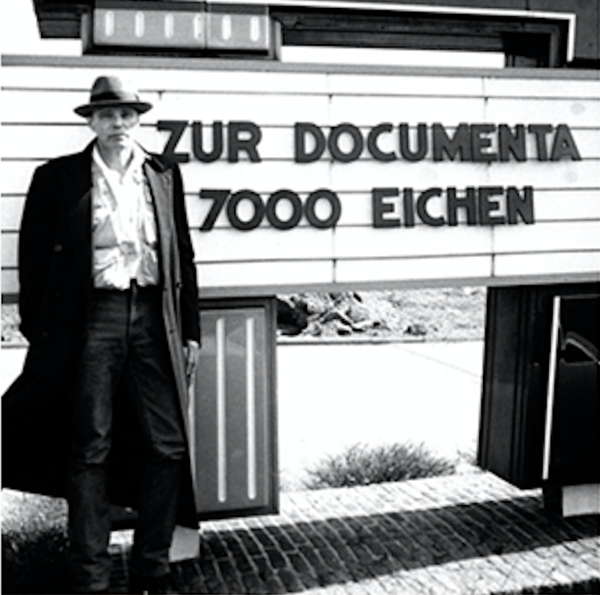
7000 Eichen. Stadtverwaldung statt Stadtverwaltung
Joseph Beuys, 1982-1987
Never before had there been such an art activity in this size, space, time and organisational effort (five-year planting campaign across the entire city of Kassel and parts of other district), for which several million German marks had to be raised. Despite his provocative claim of "urban forestation instead of city administration", Beuys was dependent on the city administration, its bureaucratic know-how and financial commitment, as he only raised enough funds to cover the "materials" (trees and stones) and transport costs but not for the mounting ancillary costs that always came with planting trees in public space. In addition, there were permanent protests and resistance from citizens of Kassel, which Beuys could never have overcome on his own, despite his charisma and "popular appeal". Hans Eichel, then the Lord Mayor of Kassel and later German Minister of Finance, became the most important external supporter, moderator and co-organiser of "7000 Oaks" until its last tree was planted in 1987. The appeal for donations of 500 DM for a "tree diploma" met with only a moderate response. In the end, the New York Dia Art Foundation secured start-up financing with 400,000 DM. The "7000 Oaks" project thus also became a lesson in modern fundraising and art marketing, for Beuys used all the possibilities of effective advertising, promotion and media presence.
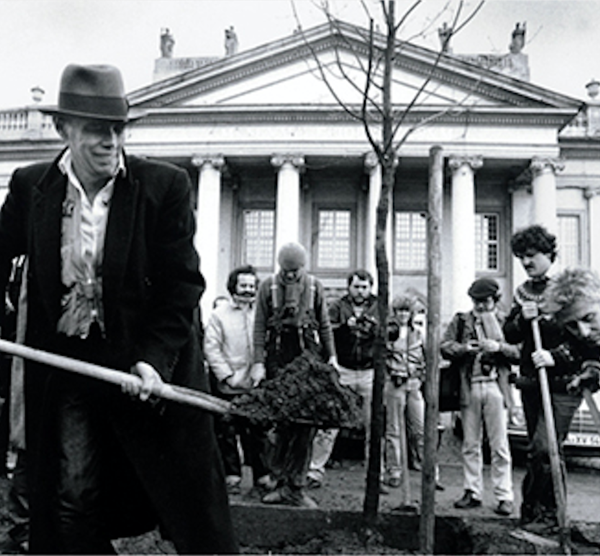
Beuys planted oaks with people
The climax was melting down the Tsar's crown, accompanied by fierce protests. The crown transformed into a golden "Peace Bunny". This highly valuable copy was donated by a jeweller, and the melting action was a PR spectacle. The "Peace Bunny" contributed significantly by securing 777,000 DM in sales proceeds from a collector. This mythical and exaggerated ritual transformation demonstrated once again the artistic unity of idea, person (= action) and materiality that was constitutive of Beuys's entire oeuvre. Once again, Beuys's entire worldview and philosophy could be deconstructed in this single action, but what was more insightful about the "7000 Oaks" project was to discover the artistic choreography behind it.
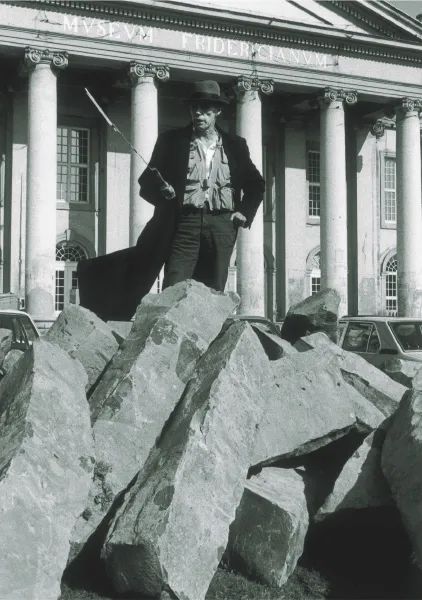
Boyce with Basalt stones
Only in the overview of the five years does the entire artistic "plan" of this mammoth project reveals itself. Weeks before the documenta, Beuys started constructing and later dismantling his "invisible sculpture", his "sculpture to be dismantled": the wedge-shaped piling up of 7000 basalt stones in the city centre were to join the 7000 trees to form a "unity as part of a circulating being of warmth and time between cosmos and earth" within five years (Pia Witzmann). The pile of basalt, recognisable only from above as a wedge sculpture, marked the initiation of this process: "The stone makes every tree I plant a sculpture, a work of art." (Beuys) And the tree transformed into a "sculpture" is also a sign of the transformation of society: a sign that society must now be raised to a new third level, free of ideology and above all beyond communism and capitalism. That was the goal. Beuys and his helpers, activists, enthusiasts and committed citizens of Kassel explored the way to get there with 7000 coordinated actions in the city space.
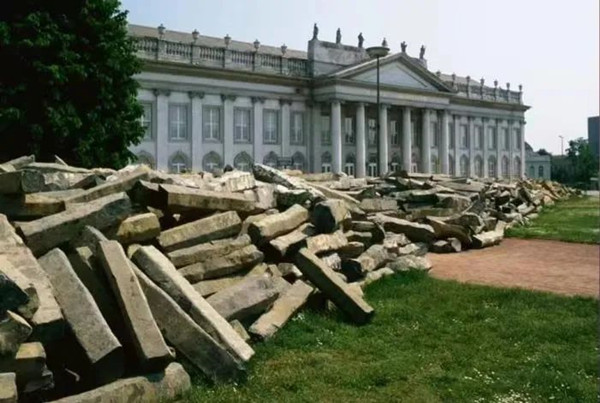
7000 Eichen. Stadtverwaldung statt Stadtverwaltung
Joseph Beuys, 1982-1987, photo: Udo Reuschling
Man created his own nature as a work of art. Each of these artistic collective planting actions was different, unique like the tree and its stone, and a utopia practised over years in everyday life. Beuys stimulated and promoted this performance incessantly in interviews, discussions, lectures, advertising and fundraising activities. The process was just as much a part of the all-encompassing choreography as the "Free International University", which was transformed into a temporary organisation office. One of the social aspects of this unique project was the realisation that "7000 Oaks" initiated the first citizens' movement as a work of art.
7000 Eichen. Stadtverwaldung statt Stadtverwaltung
Joseph Beuys, 1982-1987, photo: Nils Klinger
Kassel and its"Urban Forestation"
The "7000 Oaks" have transformed Kassel forever. No other city has grown so organically and naturally with an artist's work of art. In fact, the "7000 oaks" project included 3,827 oaks, 1,086 ash trees, 651 lime trees, 549 plane trees, 391 maples, 261 Lavallée's hawthorns,163 robinias, 91 honey trees, 2 hornbeams, 2 walnut trees, 1 copper beech, 1 tulip tree and 1 gingko, thanks to the horticultural office of Kassel. Not every tree tolerates every location. Beuys as an ecologist Beuys knew about that and therefore tactfully accepted this diversity of tree species. For him, it was much more important that in the "sculpture of tree and stone there is a constant movement", and that "this tension between what remains and what constantly unfolds and expands in time, grows". This cyclical idea was fulfilled by each tree with its basalt stone, all of which came from three Hessian quarries.
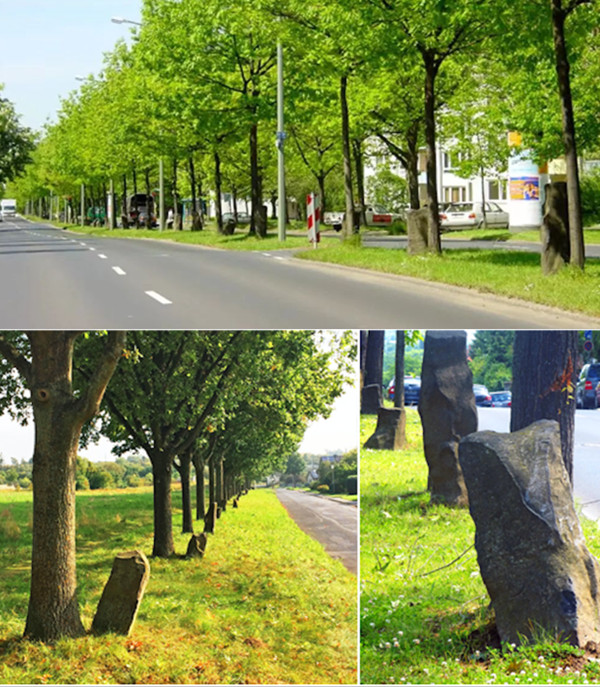
Today's Kassel
The "7000 Oaks" project moved the citizens, who expressed protest, criticism as well as enthusiasm. It quickly turned into a citizens' movement and finally into a citizens' commitment that cherished Beuys's legacy, cared for it and propagated it in many different activities. The non-profit foundation "7000 Oaks" is a citizens' initiative in Kassel that sees itself as the custodian of this "worldwide unique space-time sculpture". The foundation "promotes the artistic, social and ecological ideas inherent in the work of art". It also promotes "further development of its ideal message". Volker Schäfer, chairman of the foundation had the idea of juxtaposing the city without and with Beuys, which is shown here in a modified photo montage.
Curator
Klaus Siebenhaar

